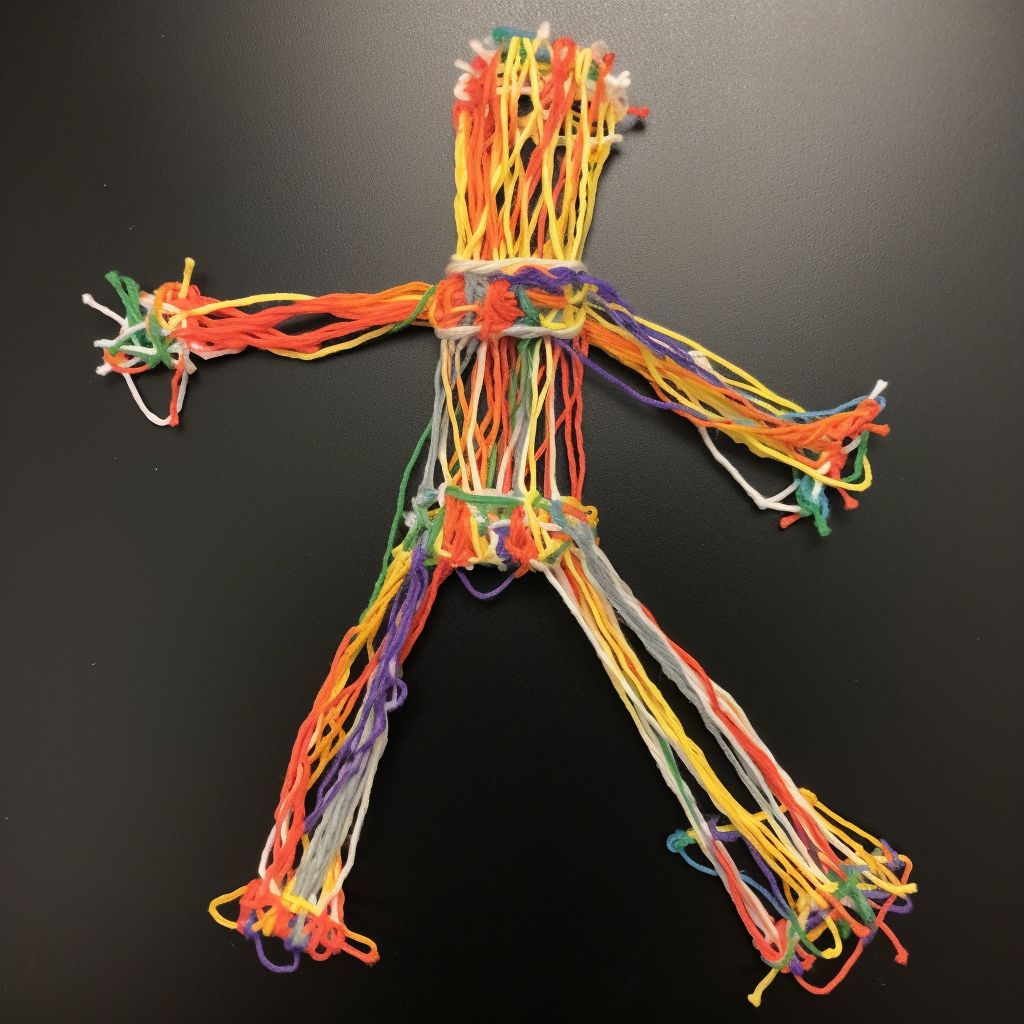Ikshutram
1st of Sun's Swell, AE 721
Ikshutram is a congenital visual impairment only experienced by divinity-touched individuals with some form of relation to Nezna. Originally classified as a monothematic delusional disorder, the term ikshutram is derived from the Hang words for vision and thread, referencing how the afflicted describe their symptoms: they claim to experience complete vision loss, other than being capable of visually perceiving other living things. However, they do not perceive other people and animals normally. They cannot identify facial features, hair colors, or clothing, and often struggle to tell apart people they do not know well, instead they describe people as great masses of tangled lines, still in humanoid shapes, but lacking distinct features. The lines vary from person to person in terms of length and thickness, and have been described as simply "looking different," which some researchers have hypothesized may mean they are viewing different colors, but such a hypothesis is currently unfalsifiable.
Ikshutram was thought of as an extremely rare delusional disorder until a groundbreaking paper was published in AE 652. Performed at Bruxaria University with three afflicted subjects given the pseudonyms Max, Erika, and Otto, each subject would independently describe a student volunteer in as much detail as they were able, and the intended design for the research was to record the sessions and compare their answers, seeing where they matched and where they didn't. Erika was the second subject to describe the volunteers, and it was during her descriptions that she began to describe what the strings "told" her. The following is a transcript of part of Erika's recorded session.
00:16:42
Erika: Some of them are thicker around her um, thigh, where she was hurt.
Student: What?
Researcher: Can you elaborate on what you mean by that?
Erika: Where she was bit. It leads back up to her head and it's quite tense, so it must still be very scary for her– for you.
Researcher: What was she bit by?
Erika: Uh, a dog? I think. I guess it could be a really big cat or something that shape, but I think a dog.
Researcher: Is she–?
Student: I– Yes, when I–
Researcher: Wait, don't ...
Researcher: "Erika," I want you to tell me absolutely everything.
The experiment continued with Otto, who was not able corroborate quite as many details as Erika was, but also identified the same student as having been injured on her thigh, and associated it with a fear of hers. Erika and Otto would go on to both independently identify another student's recent engagement, and another's asthma. Not every student had an identifiable feature, and Erika consistently provided greater detail than Otto. Max did not provide any details of note.
Another experiment performed in 661 with two different individuals suggested that those afflicted with ikshutram can see when someone is an amputee and can also differentiate whether the amputation was congenital or not. When asked to describe an individual who had lost part of their left leg in adulthood, both individuals separately described that part of their legs as having very sparsely few lines, but those that were present were quite thick and prominent. When asked to describe an individual with a congenital amputation of the arm, both separately described the lines as stopping just below the elbow, right at the end of the individual's arm.
The ability to read what researchers dubbed as "threads" seems to be a specialized ability, but it was noted in the original 652 paper that Erika and Otto were both older than Max, and the hypothesis was put forth that it could potentially be something acquired with experience and age.
Further experimentation has been ongoing, but slow. Since 652, there have only been ten known individuals diagnosed with ikshutram spread all throughout the world, including Max, Erika, Otto, and the two who participated in the 661 experiment. The extreme low prevalence of the condition has contributed to funding being difficult to come by.
Type
Divine
Parent
Cycle
Chronic, Congenital
Rarity
Extremely Rare
Affected Species
Contextual note: it is somewhat controversial among scientists to classify ikshutram as being a subtype of divinity poisoning. Those in favor of grouping them argue that since the condition only affects divinity-touched individuals, and they are by nature altered by divine magic, such congenital conditions exclusive to them must be variations on the same condition. Those in opposition argue that divinity poisoning is strictly a condition acquired during a person's lifetime after prolonged exposed to divine magic, and the definition should not be stretched at risk of becoming too all-encompassing.





This is an interesting way to see thing! I like that idea of those threads :D